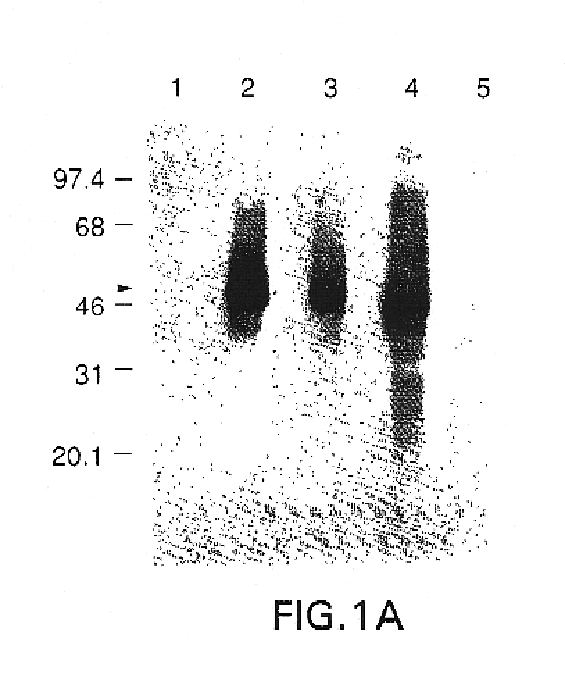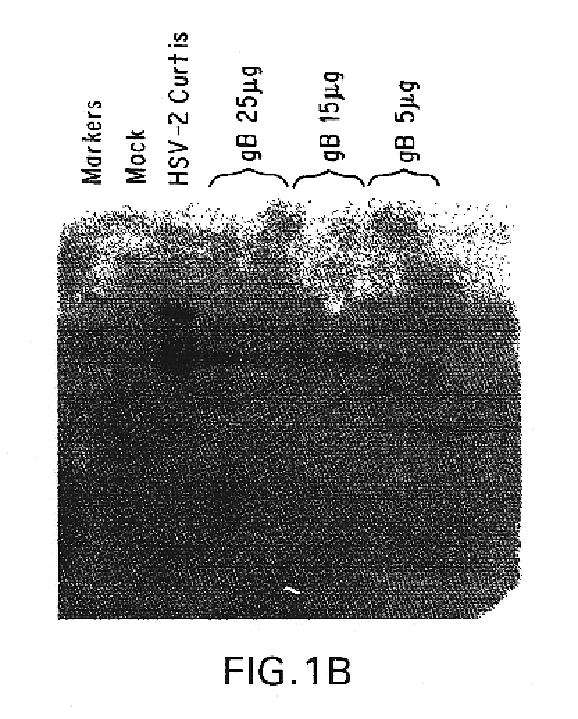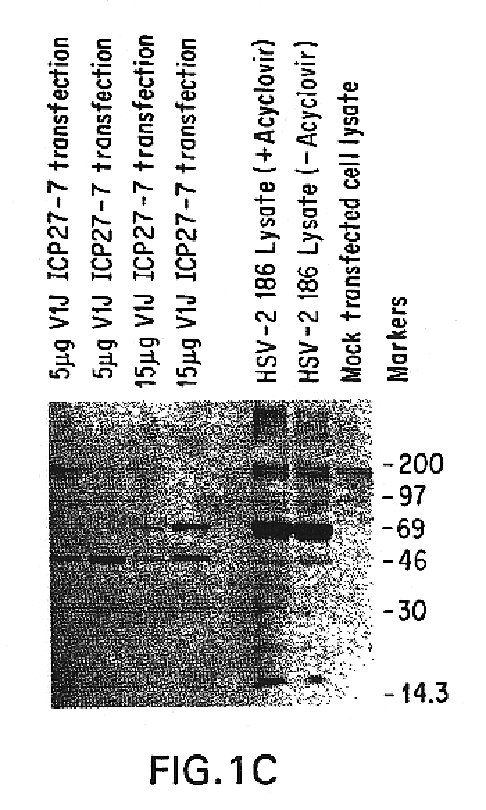Polynucleotide herpes virus vaccine
a technology of polynucleotide herpes virus and vaccine, which is applied in the field of vaccines against viruses, can solve the problems of reducing the utility of vaccines, reducing the diversity of viral external proteins, and vaccine development, so as to prevent infection and improve hsv-related diseases
- Summary
- Abstract
- Description
- Claims
- Application Information
AI Technical Summary
Benefits of technology
Problems solved by technology
Method used
Image
Examples
example 1
Vectors for Vaccine Production
A) V1
[0076]The expression vector V1 was constructed from pCMVIE-AKI-DHFR [Y. Whang et al., J. Virol. 61, 1796 (1987)]. The AKI and DHFR genes were removed by cutting the vector with EcoR I and self-ligating. This vector does not contain intron A in the CMV promoter, so it was added as a PCR fragment that had a deleted internal Sac I site [at 1855 as numbered in B. S. Chapman et al., Nuc. Acids Res. 19, 3979 (1991)]. The template used for the PCR reactions was pCMVintA-Lux, made by ligating the Hind III and Nhe I fragment from pCMV6a120 [see B. S. Chapman et al., ibid.,] which includes hCMV-IE1 enhancer / promoter and intron A, into the Hind III and Xba I sites of pBL3 to generate pCMVIntBL. The 1881 base pair luciferase gene fragment (Hind III-Sma I Klenow filled-in) from RSV-Lux [J. R. de Wet et al., Mol. Cell Biol. 7, 725, 1987] was cloned into the Sal I site of pCMVIntBL, which was Klenow filled-in and phosphatase treated.
[0077]The primers that spanned...
example 2
Vector VIR Preparation
[0098]In an effort to continue to optimize the basic vaccination vector, a derivative of V1Jns, designated V1R, was prepared. The purpose for this vector construction was to obtain a minimum-sized vaccine vector without unneeded DNA sequences, which still retained the overall optimized heterologous gene expression characteristics and high plasmid yields that V1J and V1Jns afford. It was determined from the literature as well as by experiment that (1) regions within the pUC backbone comprising the E. coli origin of replication could be removed without affecting plasmid yield from bacteria; (2) the 3′-region of the kanr gene following the kanamycin open reading frame could be removed if a bacterial terminator was inserted in its place; and, (3) ˜300 bp from the 3′-half of the BGH terminator could be removed without affecting its regulatory function (following the original KpnI restriction enzyme site within the BGH element).
[0099]V1R was constructed by using PCR ...
example 3
Cells, Viruses and Cell Culture
[0104]VERO, BHK-21, RD cells and HSV-2 strain MS were obtained from the ATCC. Virus was routinely prepared by infection of nearly confluent VERO or BHK cells with a multiplicity of infection (m.o.i.) of 0.1 at 37° C. in a small volume of medium without fetal bovine serum (FBS). After one hour, virus inoculum was removed and cultures were re-fed with high glucose DMEM supplemented with 2% heat-inactivated FBS, 2 mM L-glutamine, 25 mM HEPES, 50 U / ml penicillin and 50 μg / ml streptomycin. Incubation was continued until cytopatic effect was extensive: usually 24 to 48 hours. Cell associated virus was collected by centrifugation at 1800×g 10 minutes 4° C. Supernatant virus was clarified by centrifugation at 640×g for 10 minutes 4° C.
PUM
| Property | Measurement | Unit |
|---|---|---|
| Fraction | aaaaa | aaaaa |
| Time | aaaaa | aaaaa |
| Mass | aaaaa | aaaaa |
Abstract
Description
Claims
Application Information
 Login to View More
Login to View More - R&D
- Intellectual Property
- Life Sciences
- Materials
- Tech Scout
- Unparalleled Data Quality
- Higher Quality Content
- 60% Fewer Hallucinations
Browse by: Latest US Patents, China's latest patents, Technical Efficacy Thesaurus, Application Domain, Technology Topic, Popular Technical Reports.
© 2025 PatSnap. All rights reserved.Legal|Privacy policy|Modern Slavery Act Transparency Statement|Sitemap|About US| Contact US: help@patsnap.com



